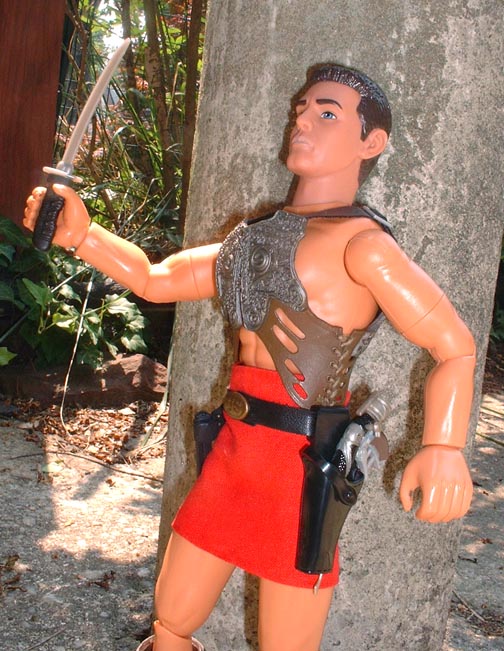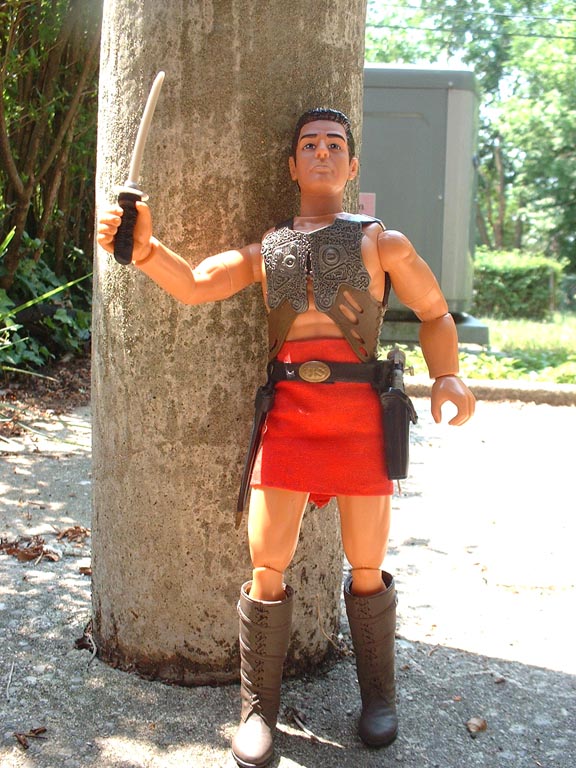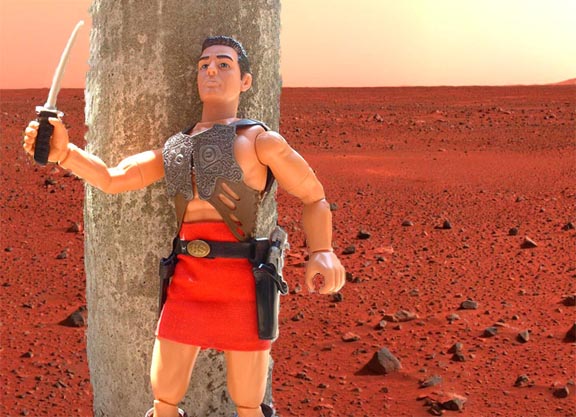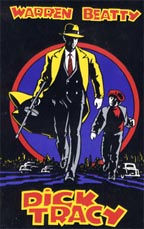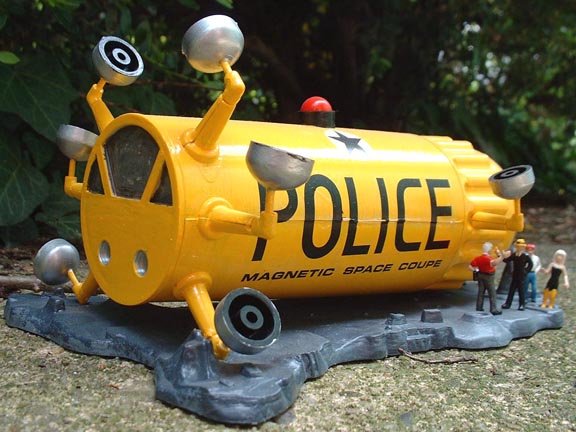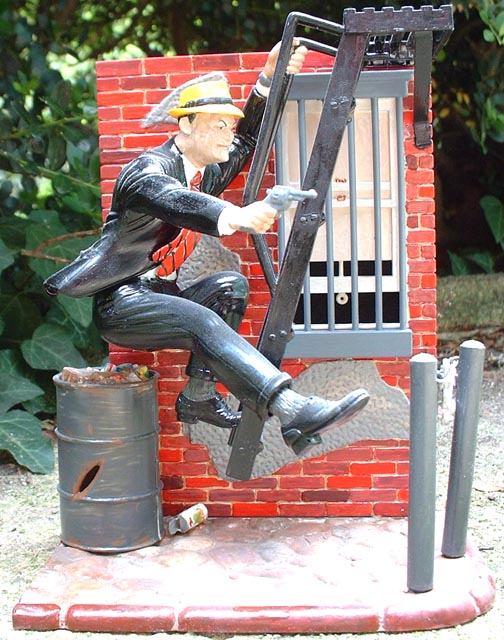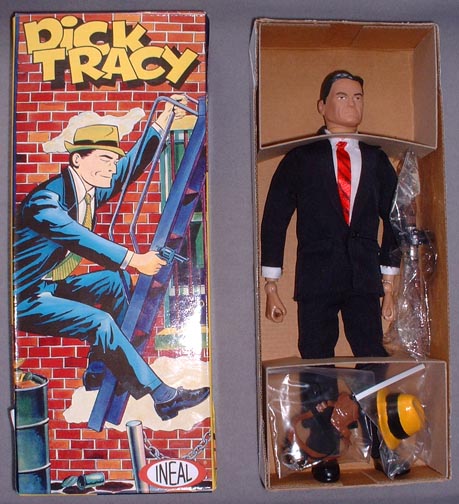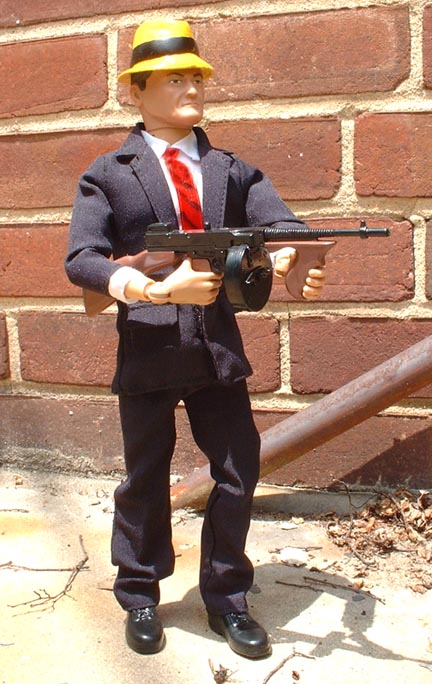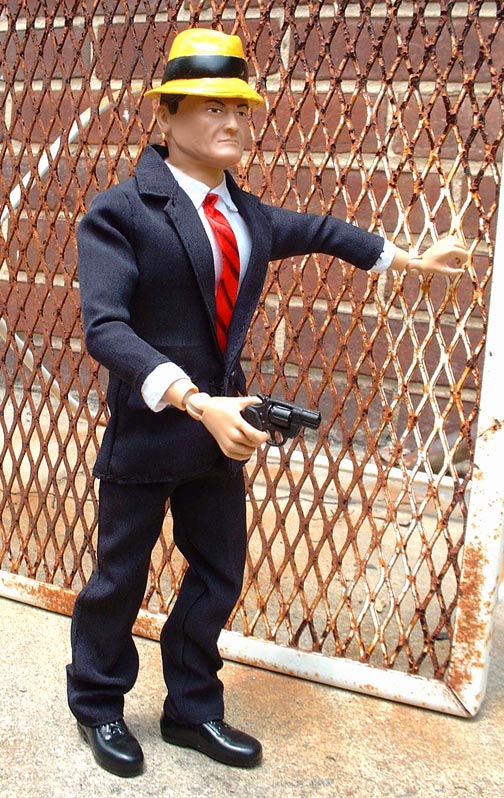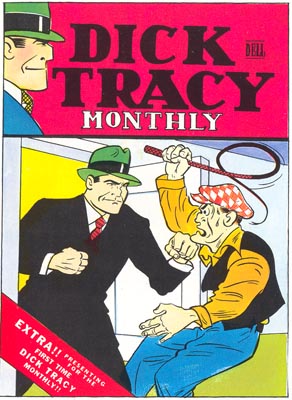 As someone born in the 1960s, I often feel like I lived the first half of my 40-odd years in one era and the other half in a different era. The pivot point, in my mind, was the proliferation of the personal computer in the 1980s. Just as Henry Ford’s Tin Lizzy fundamentally changed the way Americans (and much of the world) conducted their daily lives, PCs and Macs have dramatically changed both our personal and professional routines beyond all recognition. For young adults who were born in the 80s, I don’t think they can fully appreciate how different things used to be, just as I could hardly imagine my parent's world before television.
As someone born in the 1960s, I often feel like I lived the first half of my 40-odd years in one era and the other half in a different era. The pivot point, in my mind, was the proliferation of the personal computer in the 1980s. Just as Henry Ford’s Tin Lizzy fundamentally changed the way Americans (and much of the world) conducted their daily lives, PCs and Macs have dramatically changed both our personal and professional routines beyond all recognition. For young adults who were born in the 80s, I don’t think they can fully appreciate how different things used to be, just as I could hardly imagine my parent's world before television.
One of the major changes since the 1980s is the eroding influence of newspapers. Of course, newspapers still exist, but there are far fewer than when I was a kid, and virtually all newspaper organizations now have a strong Internet presence which I would wager gets far more attention than their printed version. Cable and satellite news channels have also become the go-to outlets for instant news and information, relegating newspapers to a portable information product used when accessing a computer, Blackberry, cellphone with web access, or a television is not feasible. Information rushes at us from so many different sources, I don’t believe anyone seeks out one primary source any longer.
During my childhood, when the Internet was unheard of and television news was squeezed in between afternoon cartoons and the prime-time line-up, newspapers represented the main source of in-depth information and analysis, and most major cities had at least two newspapers fighting for your daily attention. Since the news was pretty much the same in both papers, they had to lure you with unique features. One such competitive feature was the comic strip page. Believe it or not, many people chose their source of news based on which paper had the best collection of comic strips. As a result, a popular comic strip was extremely important to newspapers and could be quite lucrative for both the syndication outfit and the comic strip producer.
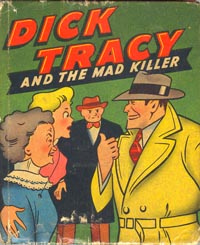 A handful of these popular strips have gone on to become cultural icons, like Dick Tracy. This gumshoe with the squared-off nose was a comic strip titan, drawing millions of readers every day for decades. Long before I came along, Dick Tracy’s popularity in newspapers spawned media spin-offs including movies, television shows, toys, comic books, and Big Little Books. The hard-boiled crime fighter, born in an era when G-Men were rounding up Depression-era gangsters, served as a cathartic outlet for those who felt anxious and helpless in an uncertain world. Once raised to the top of the entertainment heap, Dick Tracy retained his popular status into the 60s, before his creator Chester Gould made some inexplicable changes to the strip and snatched defeat from the jaws of victory.
A handful of these popular strips have gone on to become cultural icons, like Dick Tracy. This gumshoe with the squared-off nose was a comic strip titan, drawing millions of readers every day for decades. Long before I came along, Dick Tracy’s popularity in newspapers spawned media spin-offs including movies, television shows, toys, comic books, and Big Little Books. The hard-boiled crime fighter, born in an era when G-Men were rounding up Depression-era gangsters, served as a cathartic outlet for those who felt anxious and helpless in an uncertain world. Once raised to the top of the entertainment heap, Dick Tracy retained his popular status into the 60s, before his creator Chester Gould made some inexplicable changes to the strip and snatched defeat from the jaws of victory.
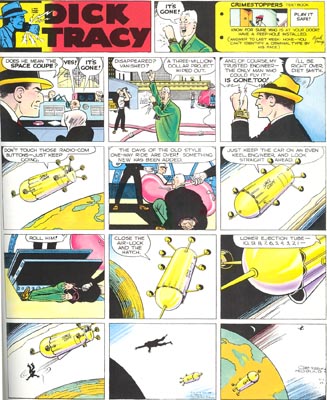 Given the strong interest in the space program, Chester Gould decided to give Dick Tracy a sci-fi angle with the introduction of the Space Coup. Soon, Tracy was taking frequent trips into space and hooking up with people on the Moon. Of course, by 1969 we landed on the Moon and confirmed that no one lived there, killing a vital element to the 1960s Dick Tracy world. Also, Tracy was known for his violent methods in dealing with criminals. After the assassinations of Martin Luther King and Robert Kennedy, people were beginning to re-think our prurient fascination with violent entertainment. Dick Tracy was becoming a sad anachronism just as I reached reading age. This didn’t stop me from loving the strip, though.
Given the strong interest in the space program, Chester Gould decided to give Dick Tracy a sci-fi angle with the introduction of the Space Coup. Soon, Tracy was taking frequent trips into space and hooking up with people on the Moon. Of course, by 1969 we landed on the Moon and confirmed that no one lived there, killing a vital element to the 1960s Dick Tracy world. Also, Tracy was known for his violent methods in dealing with criminals. After the assassinations of Martin Luther King and Robert Kennedy, people were beginning to re-think our prurient fascination with violent entertainment. Dick Tracy was becoming a sad anachronism just as I reached reading age. This didn’t stop me from loving the strip, though.
In my hometown, Dick Tracy appeared in The Baltimore Evening Sun. Again, no CNN or all-day Internet access, so many newspapers ran morning and evening editions. The other Baltimore paper, The News American, ran once a day in the afternoon. My parents subscribed to The News American because it had all the Hearst syndicate features. However, my Dad would usually pick up a Sunday edition of The Sun Papers when he went to the convenience store for smokes on Saturday night. The Sunday edition featured two separate comic sections in full color. That’s where I discovered Dick Tracy.
In the 1970s, Dick Tracy was returning to his more gritty, police procedural formula, although he still had some futuristic gadgets like his two-way wrist t.v. and the hovering air cars in which the detective could zip around the city. At first, I didn’t realize that the strip ran daily, so I was confused why I couldn’t follow the plots simply by reading the Sunday edition. Once I figured out that we needed to receive the Evening Sun every day, I begged and pleaded with my parents to switch papers, but to no avail. Actually, I wanted them to receive both papers so I could continue to read Steve Canyon and The Phantom in The News American, but I digress.
The day before I got my Sunday comics fix, I would watch Archie’s Famous Funnies, where popular comic strip characters were presented in short cartoon segments. Dick Tracy had a regular segment on the show, but it was entirely too short to develop any real plot. All it did was tease me with the desire for a full half-hour devoted only to Tracy and the gang. Weekday afternoons, the local stations would run an old Dick Tracy cartoon series from the 60s, but this series was played for laughs with Tracy sending out a goofy array of bumbling assistants to do the actual crime fighting. Pretty unsatisfying offerings, but I took what I could get.
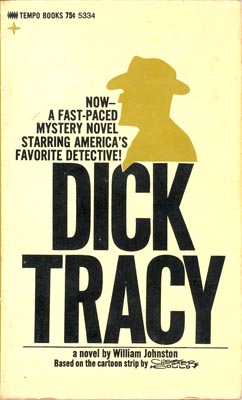 Slightly more interesting was a Big Little Book I got at the time called Dick Tracy Encounters Facey. I loved Big Little Books and this one dealt with a villain who could mold his face to look like other people including Tracy himself. I was so inspired by the book, I stapled together strips of paper about the same size as the Big Little Book and wrote my own adventure story in the same format. You remember: text on each left-hand page and an illustration on each right-hand page. I don’t recall the exact story, but the hero and heroine were named Rudy and Roxanne. Give me a break; I was eight years old.
Slightly more interesting was a Big Little Book I got at the time called Dick Tracy Encounters Facey. I loved Big Little Books and this one dealt with a villain who could mold his face to look like other people including Tracy himself. I was so inspired by the book, I stapled together strips of paper about the same size as the Big Little Book and wrote my own adventure story in the same format. You remember: text on each left-hand page and an illustration on each right-hand page. I don’t recall the exact story, but the hero and heroine were named Rudy and Roxanne. Give me a break; I was eight years old.
What really cemented my interest in the super cop was when my Dad brought home a big coffee-table type hardcover from the library which compiled all the daily and Sunday Tracy strips from the beginning in 1931 all the way into the 1940s.This was the detective in his prime and, after spending hours pouring over this huge collection, I felt like I really understood what Dick Tracy was all about. The wild, grotesque villains, the sadistic torture tests Tracy was regularly subjected to, and the violent retribution Tracy would exact from these devious thugs. Many would die tragically by their own hand, showing how a life of crime in itself would lead to one's own downfall. Probably a little over the top for today’s audiences, but wonderfully moving for a child.
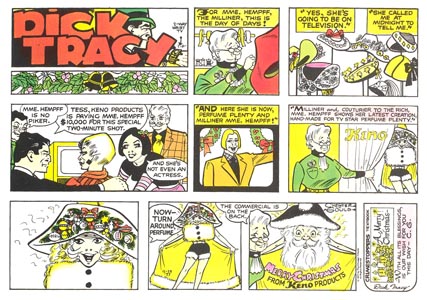 I continued to follow Tracy’s adventures throughout the 70s, reading the color strip every Sunday, then befriending kids in the neighborhood who received The Evening Sun and scanning the comic page in between playing with our G.I. Joes. Then on December 25, 1977, creator Chester Gould drew his final Dick Tracy strip. Just a silly gag strip for the holiday, I paid little attention to it and had no idea at the time that this would be Gould’s farewell. The strip continued the very next day, but the artwork looked slightly different now that Gould’s inker Rick Fletcher took over. The stories themselves actually improved as mystery writer Max Allen Collins helmed the writing, but somehow I didn’t enjoy it anymore. I felt a bond with Chester Gould’s quirky style, and this more mature Dick Tracy wasn’t working for me. I lost complete interest when Dick Locher assumed the drawing duties, as his style was far too cartoonish for me.
I continued to follow Tracy’s adventures throughout the 70s, reading the color strip every Sunday, then befriending kids in the neighborhood who received The Evening Sun and scanning the comic page in between playing with our G.I. Joes. Then on December 25, 1977, creator Chester Gould drew his final Dick Tracy strip. Just a silly gag strip for the holiday, I paid little attention to it and had no idea at the time that this would be Gould’s farewell. The strip continued the very next day, but the artwork looked slightly different now that Gould’s inker Rick Fletcher took over. The stories themselves actually improved as mystery writer Max Allen Collins helmed the writing, but somehow I didn’t enjoy it anymore. I felt a bond with Chester Gould’s quirky style, and this more mature Dick Tracy wasn’t working for me. I lost complete interest when Dick Locher assumed the drawing duties, as his style was far too cartoonish for me.
When the Dick Tracy movie came out in the summer of 1990, I decided to check back with my old detective friend. The News American had folded a few years prior, and The Sunpapers only published one edition in the morning. Dick Tracy had survived the comic strip layoffs and was appearing in the new morning edition. Art reflecting life, the story line during that summer dealt with Hollywood making a movie based on Dick Tracy’s life. I thought the whole thing pretty lame and stopped reading before the arc was completed. I imagine many other readers felt the same way, because The Sunpapers dropped Tracy’s strip shortly afterward. The Dick Tracy strip still continues solely under Dick Locher’s guidance, but now I would have to read it on the Internet. From the looks of it, I can’t really see the point.
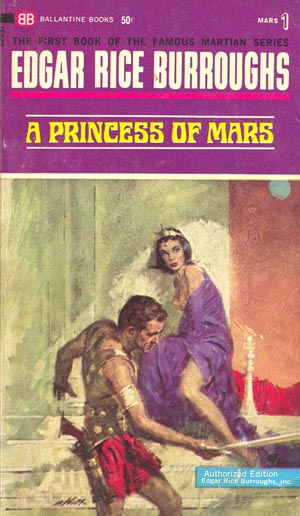 A few weeks back, I blogged about how the books of Edgar Rice Burroughs (and the related movies and comic books) had a great influence on my imagination in my early adolescence. I hesitated writing the posts since I had no toys or custom action figures to talk about, and I've tried to stick mostly to toy and action figure commentary in this blog. However, ERB was a huge part of my teenage years and still provides inspiration in my writing, so I plunged ahead and wrote what was on my mind at the time. Then I got to thinking about maybe creating a custom action figure based on the classic ERB hero, John Carter of Mars. I didn't want to go overboard and buy any new materials for the custom, but I wanted to do something that would provide at least a vague resemblance to the John Carter renderings which appeared on the old paperbacks. The artists who illustrated those covers gave John Carter a slightly gladiator look, except he carried a radium gun along with his sword. And the radium gun was usually depicted as sort of a musket/ray gun like Alex Raymond may have envisioned it. So I dug through my bins of leftover action figure accessories, old dolls, and fabric remnants. Without too much effort, I came up with what I think is a pretty serviceable figure.
A few weeks back, I blogged about how the books of Edgar Rice Burroughs (and the related movies and comic books) had a great influence on my imagination in my early adolescence. I hesitated writing the posts since I had no toys or custom action figures to talk about, and I've tried to stick mostly to toy and action figure commentary in this blog. However, ERB was a huge part of my teenage years and still provides inspiration in my writing, so I plunged ahead and wrote what was on my mind at the time. Then I got to thinking about maybe creating a custom action figure based on the classic ERB hero, John Carter of Mars. I didn't want to go overboard and buy any new materials for the custom, but I wanted to do something that would provide at least a vague resemblance to the John Carter renderings which appeared on the old paperbacks. The artists who illustrated those covers gave John Carter a slightly gladiator look, except he carried a radium gun along with his sword. And the radium gun was usually depicted as sort of a musket/ray gun like Alex Raymond may have envisioned it. So I dug through my bins of leftover action figure accessories, old dolls, and fabric remnants. Without too much effort, I came up with what I think is a pretty serviceable figure.